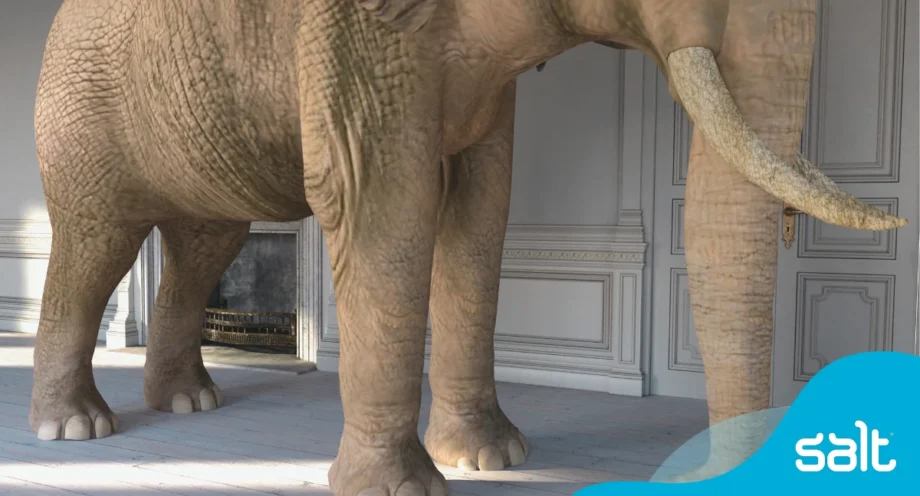The elephant in the room: unconscious bias in hiring
Learn more about what unconscious bias in hiring is and how you can avoid it in your hiring process to secure the best talent in the market.

The year 2020 has reminded many of the everyday biases which still exist within our society and has had a particularly interesting effect on various industries and their corporate culture. We have seen many companies look into creating more inclusive work environments, as well as dealing with issues of discrimination surrounding gender, sexuality, and race.
Although this is a good starting point, the elephant in the room is that some organisations underestimate the possibility of unconscious biases in the hiring and screening of candidates. Here are some recent stats which confirm this:
- According to research led by the Nuffield College’s Centre for Social Investigation (CSI), British citizens from ethnic minority or Black backgrounds sent 60% more CVs on average to get positive feedback from employers, compared to their White counterparts who had the same skillset, experience, and qualifications.
- In an article titled ‘Are Emily and Greg More Employable Than Lakisha and Jamal? A Field Experiment on Labor Market Discrimination’ authors Marianne Bertrand and Sendhil Mullainathan revealed that resumes from African American, Asian, and Hispanic names are less likely to get an invitation for interviews in the USA.
- In South Africa, an annual report published by the Commission for Employment Equity’s 2019-2020, found that White people occupied 65.5% of top management in 2019, while Black Africans occupied only 15.2% of management positions.
According to BrightTalk, “79% of HR professionals agree that unconscious bias exists in both recruitment and succession planning decisions”. The concept of unconscious bias is well-known across various industries, so what can we do to be more aware of unconscious biases, especially in HR?
What is unconscious bias?
Unconscious bias refers to the negative attitudes or stereotypes about a group of people that impact an individual’s understanding, actions, and choices unconsciously. These types of unconscious biases include but are not limited to gender biases, confirmation bias (when you have an initial perception about a candidate and based off that you make use of an interview process as a way of confirming and validating these pre-existing beliefs that affect the outcome of your decision as a hiring manager), and affinity bias (when you favour one candidate over the other because you share a trait or characteristics).
Because of these forms of unconscious bias, talented people can sometimes be overlooked in the interview selection process, which dilutes the quality of talent within the hiring pool. This essentially leads to talent being evaluated based on likeable characteristics instead of skill or ability. At its core, unconscious bias does not only relate to hiring.
Everyone holds unconscious bias. This invisible yet omnipresent force impacts many of the decisions we make in our everyday lives. Unconscious biases can act as ‘tipping the scale’ when it comes to decisions about recruitment, promotions, and even incentivising employees.
What can unconscious bias in hiring look like?
In the hiring process, unconscious bias can affect many before they even make it to their first interview. This is because the decision can sometimes be made on merely inspecting a picture on a candidate’s CV or LinkedIn profile, their name, background, education, or even something as vague as a candidate seeming like someone that you can easily hang out with outside of work.
All of these unconscious biases are irrelevant criteria for the job but could determine which candidate gets the opportunity to represent themselves. Although these biases can present themselves as unconscious, they might not always be. According to HR thought leader Matt Alder, deciding to employ a candidate that you think could be a good ‘culture fit’ or are similar to people already within your organisation happens consciously in most cases.
In some countries, it may be illegal to reject candidates based on age, race, and gender characteristics, but rejecting a candidate based on ‘culture fit’ is not. The biggest problem that hiring for culture fit presents is that organisations do not know how to measure a ‘good’ culture fit other than basing it off their own pre-existing biases.
No matter how we choose to look at it, biases in hiring stand in the way of innovative ideas and an efficient labour force that would ultimately positively contribute to the global economy.
Thankfully, many companies are now looking at their workforce and trying to create more diverse and inclusive environments. However, we must continually remind ourselves that unconscious bias does and will always exist and that we need to all be aware of it and understand it, to move forward.
How do we move forward?
Getting rid of our implicit biases may seem like a mammoth task, however, it is a necessary task for the benefit of a greater society, but also to ensure business growth, innovation, and success.
Here are a few practical steps you can take to help level the playing field for all candidates while ensuring that you attract and retain the very best talent for your business:
- Consider altering job descriptions when publishing a post. Make use of gender and racially neutral descriptions and language that would appeal to all candidates regardless of their gender
- Standardise the interview process for all candidates or employ a blind hiring process, which allows for anonymous interviewing and skill assessment
- Implement a blind test challenge to determine a candidate’s ability and skill
- Select a diverse interview panel
- Opt for a blind CV review process that excludes any demographic information relating to age, race, and gender


